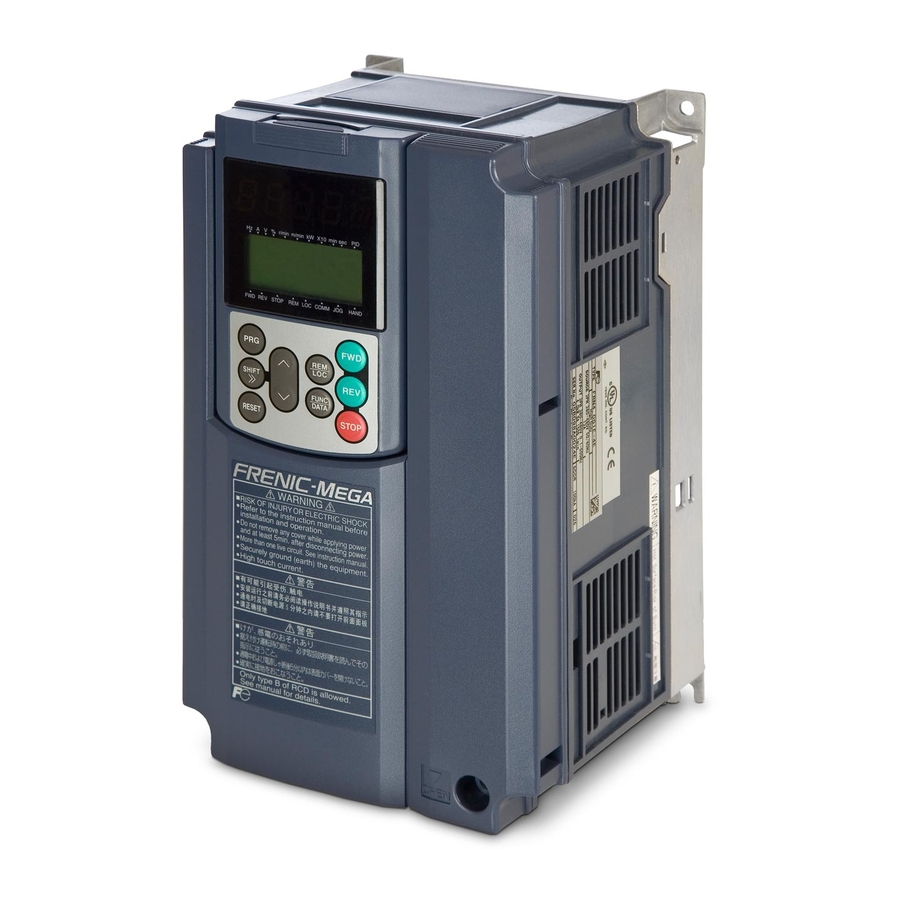
Fuji Electric FRENIC-MEGA Manuals
Manuals and User Guides for Fuji Electric FRENIC-MEGA. We have 3 Fuji Electric FRENIC-MEGA manuals available for free PDF download: Instruction Manual, Starting Manual
Fuji Electric FRENIC-MEGA Instruction Manual (288 pages)
High Performance, Multifunction Inverter
Brand: Fuji Electric
|
Category: Inverter
|
Size: 7 MB
Table of Contents
Advertisement
Fuji Electric FRENIC-MEGA Instruction Manual (358 pages)
High Performance, Multifunction Inverter
Brand: Fuji Electric
|
Category: Inverter
|
Size: 6 MB
Table of Contents
Fuji Electric FRENIC-MEGA Starting Manual (44 pages)
High Performance Multifunction
Inverter
Brand: Fuji Electric
|
Category: Inverter
|
Size: 2 MB
Table of Contents
Advertisement
Advertisement
Related Products
- Fuji Electric FRENIC-Multi
- Fuji Electric Frenic-Mini
- Fuji Electric Frenic Mega Series
- Fuji Electric frenic mini series
- Fuji Electric FRENIC-Multi Series
- Fuji Electric FRENIC-Ace series
- Fuji Electric FRENIC5000G11S Series
- Fuji Electric FRENIC-HVAC series
- Fuji Electric Frenic Eco Series
- Fuji Electric FRENIC5000 P5 Series


